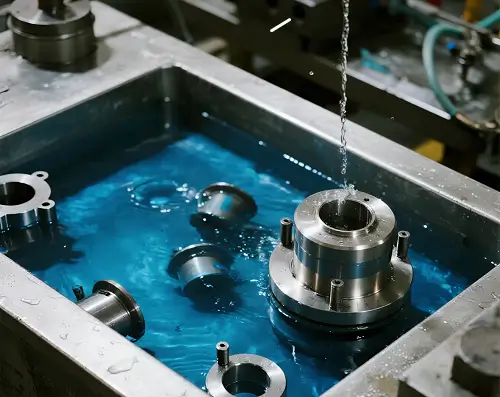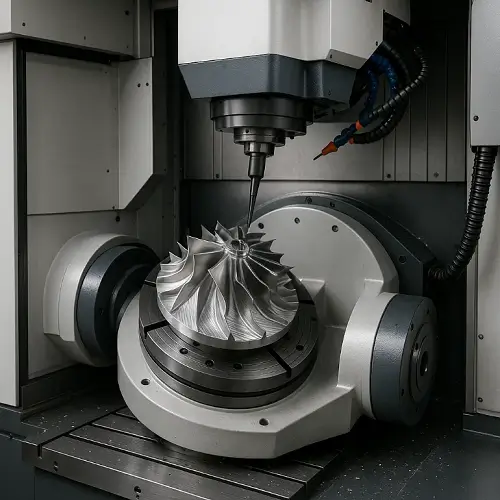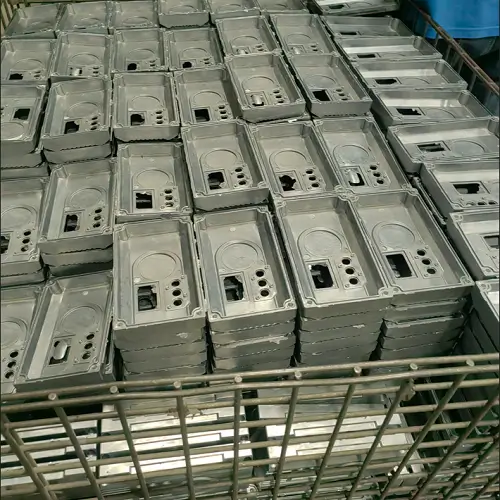Passivation is a metal surface treatment process that protects the material surface through chemical treatment and enhances its corrosion resistance.
In certain stainless steel materials, a protective film is formed on the surface. This process has long become a standard procedure in many high-end manufacturing industries.
However, many purchasing personnel or company owners still stay at the understanding of surface grinding and acid pickling, but passivation is not limited to that.
Passivation does not change the dimensions of parts nor add visible coating layers, yet it plays a critical role in long-term performance.
This article introduces the definition, principle, industry applications, and operation process of passivation to help you understand its value.

What Is Passivation?
As mentioned in the introduction, passivation is a metal surface treatment process that improves corrosion resistance.
More precisely, it is a chemical process using acidic solutions (commonly nitric acid or citric acid) to treat the surface of metal parts, aiming to remove free iron or machining residues and promote the formation of a dense, stable chromium-rich oxide layer.
Passivation is different from electroplating or coating. It does not rely on additional materials, but rather activates the metal’s own passivation ability, allowing a naturally formed protective oxide film in air.
This layer is typically less than 5 nanometers thick but can significantly improve corrosion resistance—especially for precision parts with strict dimensional and surface cleanliness requirements.
Industry Applications of Passivation
-
Aerospace: Stainless steel fasteners, hydraulic tubing, and high-pressure fittings. It helps extend service life.
-
Automotive: Stainless steel components in engine parts, sensor housings, and exhaust systems to prevent high-temperature oxidation.
-
Medical Devices: Common for 316L stainless steel surgical instruments, dental tools, and implants.
-
Food Processing: 304 and 316L food-grade stainless steel parts to reduce heavy metal migration.
-
Electronics: Signal connector housings, miniature fasteners, and spring clips, to maintain long-term surface gloss, improve aesthetics, and fingerprint resistance.
Principle of Passivation
Removal of free iron by acid solution:
Through immersion in citric acid or nitric acid over a specific period and temperature, metal parts reach the passivation level.
(This is known as the contaminant removal mechanism.)
Formation of a chromium-rich passive film:
Under the presence of oxygen in the air, a natural chromium oxide film (Cr₂O₃) forms.
After the passivation process removes free iron, the exposed chromium-rich surface interacts with air to regenerate a more complete and stable passive layer.
(This is known as the passive film regeneration mechanism.)
These two steps happen continuously and can also be seen as Step 1: cleaning and Step 2: protection.
We make this distinction because at JeekRapid, some clients have asked: “Did you do passivation?”—not because they wanted a coating, but because they cared about surface cleanliness.
In other words, different clients focus on different aspects of passivation—
some emphasize corrosion resistance (passive film),
while others focus on cleanliness and free iron removal (contaminant control).
Passivation FAQ
Q: Does passivation change part dimensions?
A: No. Passivation is not a coating process. The surface layer is extremely thin (about 1~5nm), and dimensional impact is negligible.
Q: How soon after machining should passivation be performed?
A: Within 48 hours is recommended, to prevent recontamination from moisture or particles in the air.
Q: How to choose between citric acid and nitric acid passivation?
A: Nitric acid offers slightly stronger performance but has toxicity and discharge issues. Citric acid is more environmentally friendly, suitable for industries with high residue control requirements like medical and food.
Q: Is every type of stainless steel suitable for passivation?
A: Most austenitic and precipitation-hardened stainless steels are suitable. Ferritic or martensitic types should be confirmed for corrosion behavior before treatment.
Q: Can passivation replace pickling?
A: No. Pickling removes heavy surface contamination like scale and weld discoloration. Passivation is a final stabilization step. They complement each other.
Need CNC parts with passivation done right?
Contact us to get a quote now →


